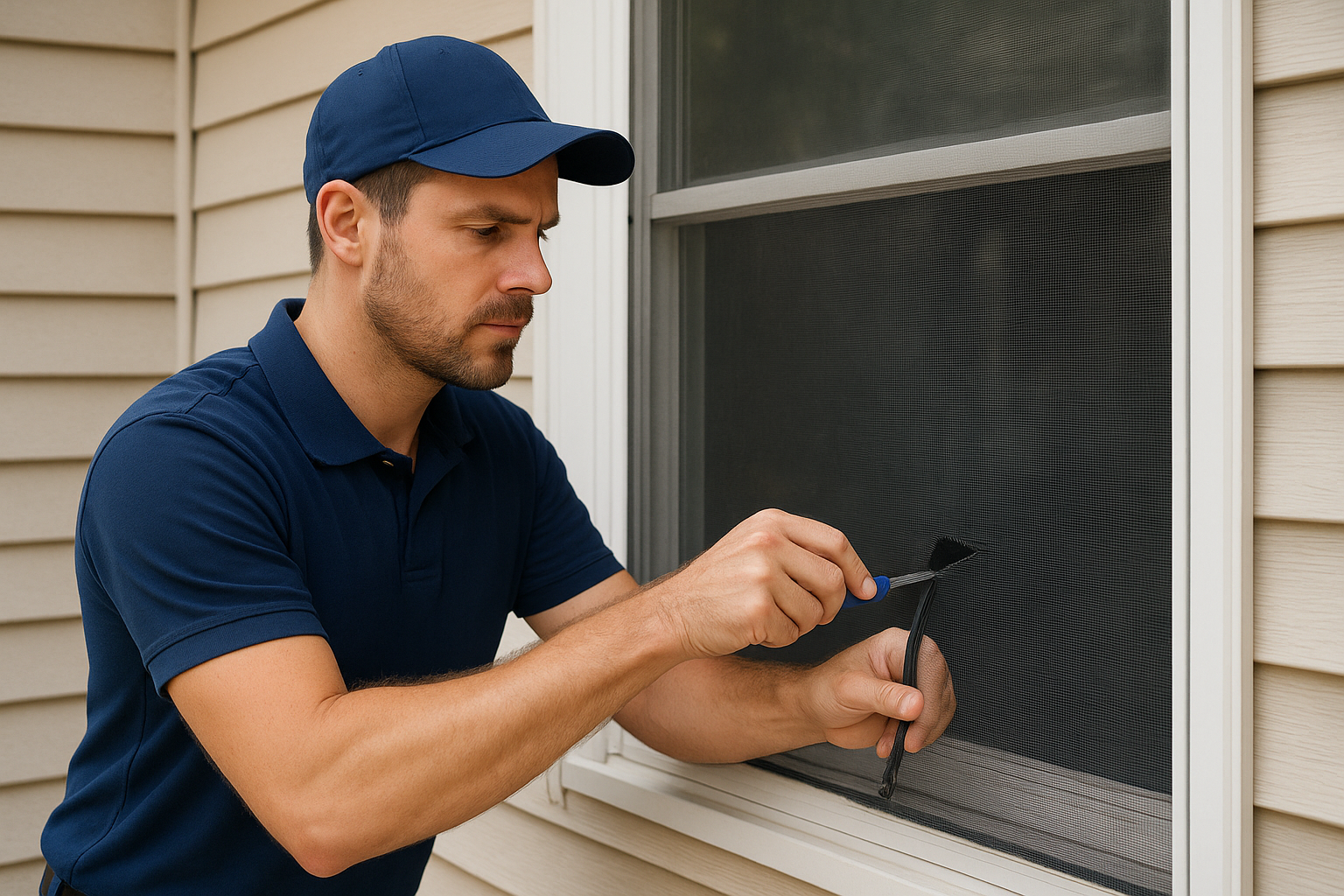
If you’re starting to notice tears, sagging mesh, or missing panels in your window, patio, or pool enclosure screens, you’re probably wondering: “Should I repair them now, or wait?”
Timing your screen repairs right can save you money, reduce wait times, and ensure better results—especially in places like Florida, Texas, or the Southeast, where outdoor spaces are used year-round.
In this in-depth guide, we’ll explore:
- The best time of year to repair or replace your screens
- The seasonal pros and cons
- What factors affect cost and availability
- Regional timing considerations
- How to plan ahead and avoid costly delays
Let’s dive in and help you choose the smartest time to schedule your screen repairs.
Spring: The Popular (But Busy) Season for Screen Repair
Spring is when many homeowners realize their screens took a beating over the winter. From high winds to heavy rains, cold-weather damage becomes visible once the weather warms up.
Pros:
- Comfortable weather for outdoor repairs
- Ideal time to prep your outdoor space before summer
- More daylight = faster job completion
Cons:
- High demand = higher prices
- Contractor schedules book fast (especially March–May)
- Wait times can stretch 2–3 weeks in some areas
Tip: If you’re aiming for a spring repair, book your contractor in late winter (January–February) to secure a spot and avoid the rush.
Summer: Great for Fast Turnaround (But Beating the Heat Is Tough)
Summer might seem like the worst time for repairs due to intense heat—but it actually offers some unexpected advantages.
Pros:
- Off-peak months in some regions, meaning faster availability
- Damage from spring storms is fresh and visible
- Ideal time to upgrade to solar or UV-blocking mesh
- Great for full rescreening before hurricane season in Florida
Cons:
- Hot, humid conditions make the work harder
- Stormy weather may delay outdoor projects
- Mesh materials can expand/shrink in extreme heat
If you’re in a northern or coastal area, summer can be an ideal window with minimal interruptions.
Fall: The Best Season for Most Screen Repairs
If you want to avoid crowds, beat the weather, and possibly save some money—fall is often the sweet spot for screen repairs.
Pros:
- Contractor schedules are more flexible
- Lower costs due to post-peak season rates
- Weather is mild and ideal for sealing new screens
- Great prep time for winter or holiday hosting
Cons:
- Shorter daylight hours can extend project timelines
- Waiting too long may run into early winter storms
Bonus: Fall is also a great time to bundle services, like pressure washing, gutter cleaning, and minor repairs.
Winter: The Off-Season With Hidden Opportunities
In warmer states like Florida, Arizona, or Southern California, winter can be the most affordable time to schedule screen work.
Pros:
- Lowest labor rates in off-season
- Less demand = faster turnaround
- Easier to schedule experienced contractors
- No bug swarms or intense heat for installers
Cons:
- Too cold in some states for proper installation
- Harder to install screens during snow or freezing temps
- Some contractors may reduce winter hours
If you live in a southern state, winter is the perfect time to tackle screen work without the premium costs.
Regional Considerations: Timing Your Screen Repairs by Location
Different climates affect the ideal time for screen repairs. Here’s a quick guide:
Florida & Gulf Coast:
- Best: Fall or Winter (October–February)
- Avoid late summer due to hurricane season & high humidity
Arizona, Nevada, Southwest:
- Best: Late Fall or Early Spring (October–March)
- Avoid peak summer due to extreme heat
Southeast (Georgia, Carolinas, Alabama):
- Best: Spring and Fall (March–May, September–November)
- Avoid summer storms and winter cold snaps
Midwest & Northeast:
- Best: Late Spring and Early Fall
- Avoid snow, ice, and heavy rain seasons
- Screen repairs may be limited to April–October
Not sure when to book? Call a local screen contractor and ask about their seasonal availability.
How Timing Affects Screen Repair Costs
Believe it or not, when you book can directly influence your repair bill.
Seasonal Pricing Trends:
| Season | Labor Costs | Material Costs | Wait Time |
| Winter (South) | Low | Stable | Fast |
| Spring | High | Slight increase | Moderate |
| Summer | Moderate | Slight increase | Fast |
| Fall | Low | Stable | Flexible |
Many screen companies offer seasonal discounts in winter or fall to fill calendars, so ask about off-season promotions or bundling services.
Planning Ahead: How to Prepare for Screen Repairs
No matter when you decide to repair your screens, good planning pays off.
Pre-Repair Checklist:
- Inspect all screens and frames for damage
- Take photos of problem areas to share with contractors
- Clean your patio or enclosure before the appointment
- Move furniture or potted plants out of the way
- Get 2–3 quotes for comparison
Want a full rescreen or upgraded mesh? Let the contractor know in advance—it may affect material lead times.
Should You DIY or Hire a Pro?
Small tears or a single loose panel? DIY repair kits can be a quick, affordable fix.
But for:
- Pool enclosures
- Lanai or patio screen rooms
- Second-story windows
- Bent aluminum frames
It’s best to hire a professional. They’ll ensure a tight, weather-resistant fit and use materials that last 7–15 years.
Final Thoughts: The Best Time Is… When You’re Ready (But Fall Wins Overall)
So, when is the best time of year to repair screens?
While every season has its pros and cons, fall consistently offers the best combination of:
- Mild weather
- Short wait times
- Competitive pricing
- Ideal working conditions
That said, don’t wait for the “perfect” moment. If your screens are torn, sagging, or letting bugs in, it’s time to repair them now—before small problems turn into expensive ones.
And remember: proactive repairs today save you from costly replacements tomorrow.



